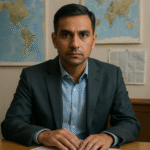Kathmandu, September 13: Nepal has hit the reset button. After a week of violence that left more than fifty people dead and over a thousand injured, President Ramchandra Paudel dissolved parliament, fixed fresh elections for March 5, 2026, and put a retired judge at the helm of government.
The caretaker Prime Minister is Sushila Karki, once the country’s Chief Justice, and now the first woman ever to lead Nepal even if only in an interim role.
A Sudden Shift At The Top
Karki isn’t a career politician. That may be exactly why she was chosen. During her time on the Supreme Court, she clashed with the political class and earned a reputation for independence. Now she’s being asked to keep the country steady until voters get their say next spring.
It’s a tall order. This isn’t a routine transition it’s a desperate attempt to calm a population that just spent a week battling police in the streets.
The Streets Quiet, But Only Just
Shutters went up across Kathmandu this morning. Buses started running. The curfew that had blanketed the country was lifted, according to The Himalayan Times. On the surface, things look normal again. But soldiers are still stationed at roundabouts, and people talk in hushed voices about what they saw tear gas, gunfire, neighbours carried to hospital.
One tea seller near Ratna Park put it simply, “We are open today, but nothing feels normal.”
What Sparked The Anger
The protests were set off by something almost mundane a government order banning social media. Officials claimed it was about security. For young Nepalis, it felt like suffocation.
This is a generation raised in the shadow of the peace accord, not the civil war. They live online, argue online, fall in love online. Taking that away was like ripping out their voice.
The backlash was immediate and ferocious. Crowds swelled, slogans turned to clashes, and the death toll climbed fast. Reuters puts the figure at 51 dead and more than 1,300 injured the kind of numbers not seen since the Maoist conflict years.
New Delhi Watches Closely
Across the border, India moved quickly to welcome the interim government. The Times of India quoted officials calling Nepal a “fellow democracy” and pledging cooperation.
It wasn’t just polite diplomacy. Nepal’s turmoil spills over. Thousands cross the open border for work every day. Trade runs through its highways. And with China also courting Kathmandu, New Delhi has every reason to want stability next door.
What Comes Next
The clock is now ticking to March. In theory, the months ahead will be about restoring calm and preparing credible elections. In practice, it will mean trying to convince a disillusioned generation that the ballot box is worth their time.
Karki’s government has to tread carefully. Too heavy-handed, and the protests could return overnight. Too soft, and political parties may sense weakness and undercut her.
For now, at least, the city is breathing again. The curfew is gone, the shops are open, and people are moving about with wary relief. But the memory of the last week lingers in every conversation. Nepal has pressed pause, not play.
Stay ahead with Hindustan Herald — bringing you trusted news, sharp analysis, and stories that matter across Politics, Business, Technology, Sports, Entertainment, Lifestyle, and more.
Connect with us on Facebook, Instagram, X (Twitter), LinkedIn, YouTube, and join our Telegram community @hindustanherald for real-time updates.
Specializes in South Asian geopolitics and global diplomacy, bringing in-depth analysis on international relations.






